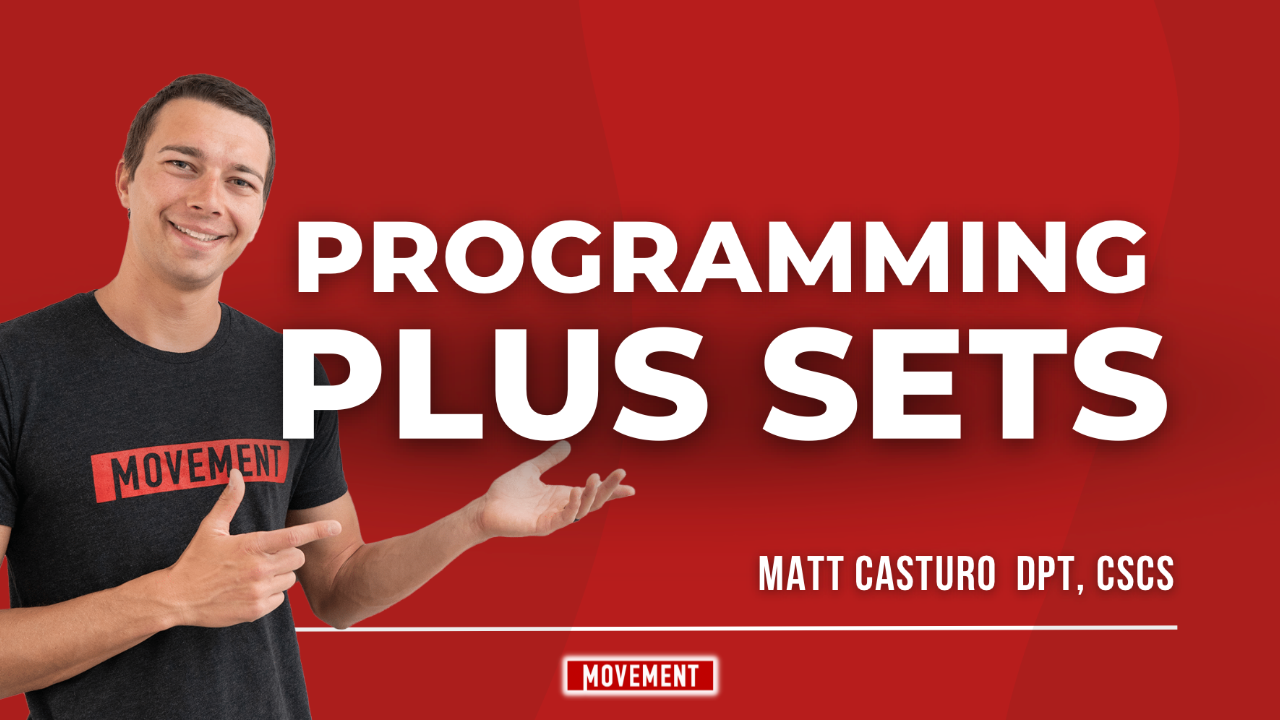What are Plus Sets? | How to Use Them and Programming Plus Sets
Aug 07, 2023
Edited by: Danielle Abel
Have you ever wanted to test your maximum strength but weren't sure of the most efficient way to do it? Enter, Plus Sets.
Plus Sets are simply where you select a movement, a deadlift for example, and take the very last set of that movement all the way to failure by doing as many reps as possible.
- AMRAP = As Many Reps As Possible
This is different than what you might have heard of programming AMRAPs for specific movements like 60 seconds of wall balls to increase the metabolic demand (build-up of lactate in the blood) of an exercise or session. The plus set type AMRAP is where you can strategically test your maximum strength.
Using the plus set approach can help you conveniently work in regular testing to your strength training program. Instead of an athlete finishing with 5 reps. They finish with 5+ and perhaps they get 6.
You can then plug in the load and the 6 reps to a 1RM estimator calculator to if you'd like to adjust their programs 1RM.
Plus Sets can also be used more frequently to show athletes the strength that they have gained.
Plus Sets also save you on time, because working up to heavy singles can take a great deal of time, and may not be efficient if you have a lot of athletes you need to train.
Programming Plus Sets
Here are a couple of examples of how to program Plus Sets for different athletes.
- Baseball Athletes using Linear Periodization - program during week 4/4 of their current training block, choose the day when fatigue would most likely be the lowest (from training or games, etc.) On this day take the last set of their primary strength movement all the way to failure.
- Spriting Athletes using Undulating Periodization - program during week 4/4 of their current training block, choose the day in which the athletes are training strength, and if possible try to also choose a day when fatigue would be at it's lowest
- Have the athletes warm up for 2-3 sets of 3-5 reps, and then on their last set, have a spotter (or spotters) in place and instruct the athlete to take the weight that they can do for 3-5 reps to absolute failure
- If you're a personal trainer, I also find this to be a good approach for your general fitness clients who are just trying to get stronger over time but don't want to formally test their 1RM.
Exercises Ideas for Plus Sets
You can choose any exercise that you want, but we would suggest testing a movement that is either important to the athlete's sport or a movement that the athlete thinks is important or personally prefers.
Also, keep in mind if you will or won't have spotters available since, for example, some movements will require a spotter to keep the athlete safe.
- If Spotter is Available:
- Squat
- Bench Press
- Overhead Press
- Step Up
- If No Spotter Available:
- Deadlift
- Clean
- Power Clean
- Snatch
- Hip Thrust
Track Plus Set Data
If you're going to take the time to test estimated 1RM, you might also consider how you will track, trend, and share this data with athletes. Will you share this information with the athlete directly or will you share each athlete's estimated 1RM with the team, for some friendly competition? You might even have a recognition board that you use to show the heaviest lift, most improved, most number of reps, etc.
The goal of Plus Sets is to keep athletes motivated and excited about training. If you can show them objectively that they are making progress, it's likely teamwork and overall sport performance will be enhanced.
Support & Courses Available
Ready for even more support? Our Program Design 101 Course teaches you exactly how to organize an annual training plan and provides sport-specific examples, and even includes done-for-you programming templates by phase. Click the link here to check it out.
Stay connected with news and updates!
Join our mailing list to receive the latest news and updates from our team.
Don't worry, your information will not be shared.
We hate SPAM. We will never sell your information, for any reason.

